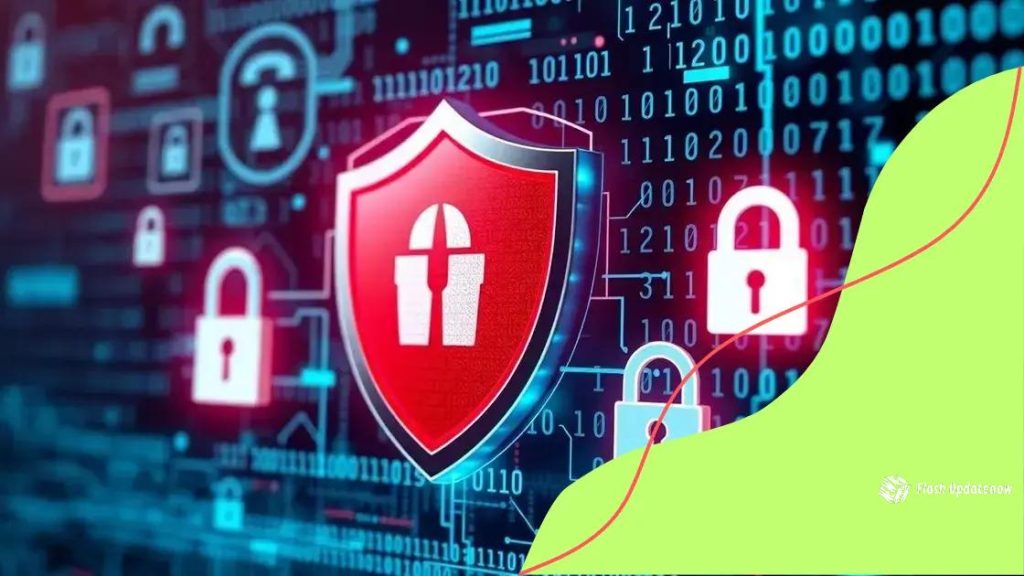Cybersecurity threats and responses you need to know

Cybersecurity threats require organizations to prioritize employee training, implement strong incident response plans, regularly update software, and foster a security-focused culture to effectively mitigate risks and respond to incidents.
Cybersecurity threats and responses have become a pressing concern for individuals and organizations alike. With the rise of digital interactions, protecting sensitive information is vital. Have you thought about how prepared you are against potential attacks?
Understanding the landscape of cybersecurity threats
In today’s digital age, understanding the landscape of cybersecurity threats is more crucial than ever. With technology evolving rapidly, businesses and individuals face a myriad of challenges in protecting their data.
Cyber threats come in various shapes and sizes, affecting organizations of all types. One major threat is malware, which can damage systems and steal sensitive information. It’s important to recognize these threats to devise effective countermeasures.
Types of Cybersecurity Threats
There are several prominent types of cybersecurity threats:
- Phishing: This occurs when attackers trick individuals into providing personal information.
- Ransomware: A type of malware that locks files, demanding payment to unlock them.
- Data breaches: Unauthorized access to confidential data can lead to significant losses.
- DDoS attacks: Overloading a network with traffic to disrupt services.
Another critical element is recognizing the impact of these threats. Organizations must prioritize cybersecurity by understanding vulnerabilities in their systems. Some factors that contribute to these vulnerabilities include outdated software, weak passwords, and lack of employee training. Addressing these issues is essential for mitigating risks.
Effects of Cybersecurity Threats
The effects of cybersecurity threats can be devastating. Organizations may face financial losses due to operational disruptions or data loss. Additionally, reputational damage can lead to the loss of customer trust. Therefore, acknowledging these risks is the first step toward building a robust cybersecurity strategy.
Involving employees in cybersecurity initiatives is also key to success. As the frontline workers, they can help identify suspicious activities and promote a culture of security within the organization. Training programs and awareness campaigns are effective ways to educate staff about potential threats.
Overall, comprehending the landscape of cybersecurity threats positions organizations to take proactive measures, ensuring the safety of their digital assets. Remaining vigilant and responsive to emerging threats can greatly enhance an organization’s resilience against cyberattacks.
Common types of cybersecurity attacks
Understanding the common types of cybersecurity attacks is essential for anyone looking to protect their digital information. These attacks can cause significant harm, making it vital to stay informed.
One major type of attack is known as phishing. This method involves tricking individuals into revealing personal information, typically through fraudulent emails. These messages often look legitimate, which makes them dangerous.
Ransomware Attacks
Ransomware is a particularly aggressive type of cyber attack. Once it infiltrates a system, it encrypts files and demands payment to unlock them. Organizations can suffer severe consequences, including data loss and financial ruin.
DDoS Attacks
DDoS (Distributed Denial of Service) attacks overwhelm a network with traffic, causing legitimate users to be unable to access services. This type of attack can lead to lengthy downtimes for businesses.
- SQL Injection: Attackers insert malicious code into a database query, allowing them to access sensitive data.
- Malware: This encompasses various types of software designed to harm or exploit devices.
- Man-in-the-Middle: Attackers intercept communications between two parties to steal information.
- Credential Stuffing: This attack uses stolen usernames and passwords to gain unauthorized access to accounts.
Awareness of these attack types is the first step toward developing a strong defense strategy. Implementing security measures and training employees can help minimize the risks involved.
Moreover, keeping software updated and regularly backing up data are effective ways to protect against these threats. Cybersecurity must be a continuous effort to adapt to evolving attack methods.
Best practices for strengthening your defenses

To effectively combat cybersecurity threats, organizations need to implement the best practices for strengthening their defenses. These strategies can create a robust security posture that helps mitigate risks.
One key element is ensuring that all software, including operating systems and applications, is kept up to date. Updates often include security patches that close vulnerabilities. Regularly applying these updates is essential for staying protected against new threats.
Implementing Strong Password Policies
Developing strong password policies is another foundational practice. Encourage employees to use complex passwords that include a mix of letters, numbers, and symbols. Additionally, consider enabling multi-factor authentication (MFA). This extra layer of security makes it more difficult for attackers to gain unauthorized access.
Employee Training and Awareness
Providing regular training for employees about cybersecurity awareness is crucial. Teach them how to recognize phishing attempts and other common attacks. This knowledge empowers them to be vigilant and proactive in their online activities.
- Conduct Regular Security Assessments: Frequent assessments help identify weaknesses and areas for improvement.
- Develop an Incident Response Plan: Have a clear plan in place to respond to security breaches efficiently.
- Limit Access Privileges: Ensure that employees only have access to the information necessary for their jobs.
- Backup Data Regularly: Regular backups can ensure that you do not lose critical information in the event of an attack.
Furthermore, implementing network security measures such as firewalls and intrusion detection systems can help protect sensitive data from external threats. These technologies monitor and filter incoming and outgoing traffic, providing an additional layer of protection against cyber attacks.
Finally, fostering a culture of security within your organization is vital. Encourage open communication about security issues and promote a shared responsibility among all employees. When everyone is invested in cybersecurity, the organization becomes more resilient against potential threats.
Incident response strategies for organizations
Having effective incident response strategies is crucial for organizations facing cybersecurity threats. These strategies help ensure quick recovery and minimize damage during a security breach.
One key element is developing an incident response plan. This is a documented strategy that outlines how to identify, respond to, and recover from incidents. Every organization should customize its plan based on specific risks and resources.
Establishing an Incident Response Team
Creating an incident response team (IRT) is vital. This team’s role is to manage responses during a cybersecurity incident. Members should include IT professionals, legal advisors, and communication experts.
Identifying and Assessing Incidents
When an incident occurs, the first step is to identify and assess the situation. Organizations should use monitoring tools to detect suspicious activities and analyze the extent of the breach. Early detection can significantly reduce potential damage.
- Containment: Quarantine affected systems to prevent further harm.
- Eradication: Remove malicious elements from the network.
- Recovery: Restore systems to normal operations while ensuring no threats remain.
- Communication: Inform stakeholders and affected parties about the incident.
After handling an incident, it’s important to conduct a thorough review. This review should analyze what happened, how effective the response was, and what improvements can be made. Learning from past incidents helps shape better strategies for the future.
Regular training and drills for the incident response team can also enhance preparedness. Practicing different scenarios ensures that team members are familiar with their roles, enabling a coordinated response during an actual event.
Overall, establishing strong incident response strategies not only helps manage cybersecurity incidents but also fosters greater resilience within the organization.
The role of employee training in cybersecurity
The role of employee training in cybersecurity cannot be overstated. Employees are often the first line of defense against cyber threats. Training them properly can significantly reduce the risk of security breaches.
Regular training helps employees understand potential threats like phishing and malware. By knowing what to look for, employees can spot suspicious emails or links, preventing many attacks before they occur. Additionally, keeping staff informed about the latest threats ensures that they are prepared to act swiftly.
Types of Training Programs
There are several types of training programs organizations can implement:
- Awareness Training: This type focuses on general security practices and how to recognize potential threats.
- Phishing Simulation: Simulated phishing attacks can help employees practice identifying fake emails.
- Policy Training: Employees should understand their organization’s security policies and procedures.
- Incident Response Training: Preparing employees for what to do in the event of a security breach is crucial.
Implementing these training programs not only increases awareness but also builds a culture of security within the organization. When employees feel responsible for cybersecurity, they are more likely to be vigilant.
Moreover, ongoing training is essential. Cybersecurity is a constantly evolving field, and regular updates ensure that employees remain informed about new tactics used by cybercriminals. By making training a priority, organizations can enhance their overall security posture.
Beyond formal trainings, fostering open communication about security issues can empower employees. Encouraging them to report suspicious activity without fear of repercussions can lead to quicker responses to potential threats.
In conclusion, understanding the importance of cybersecurity threats and taking steps to mitigate them is essential for all organizations. Employee training plays a key role in enhancing awareness and preparedness, making workers the first line of defense against cyber attacks. By implementing strong cybersecurity practices and regular training programs, organizations can build a culture of security awareness. This not only protects sensitive information but also fosters a resilient work environment ready to tackle any threat that may arise. Ultimately, prioritizing cybersecurity ensures long-term safety and success for businesses in a digital world.
FAQ – Frequently Asked Questions about Cybersecurity and Employee Training
Why is employee training important for cybersecurity?
Employee training is crucial as it helps staff recognize potential threats and understand safe practices, reducing the likelihood of security breaches.
What should an incident response plan include?
An incident response plan should outline the steps to identify, respond to, and recover from cyber incidents, ensuring a quick and organized response.
How often should organizations update their software?
Organizations should update their software regularly to ensure they have the latest security patches and protections against emerging cyber threats.
What are some best practices for creating a security culture?
Encouraging open communication, providing ongoing training, and promoting responsibility among employees are key best practices for fostering a strong security culture.
